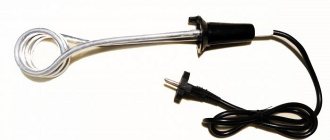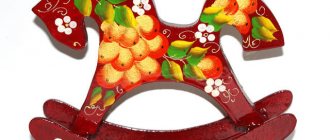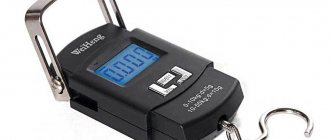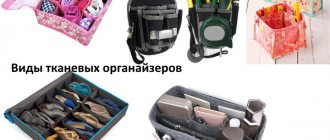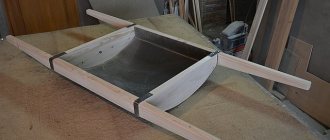Hay and straw choppers can be divided into 2 broad categories. These are industrial and domestic. The former are suitable for mass processing of raw materials. They are used in large industries, livestock farms and more.
Homemade ones are compact in size. Suitable for domestic use when you need to meet the needs of a small household.
And if it is better to buy industrial devices from a trusted manufacturer, then equipment for home use can be assembled with your own hands.
Why is a shredder needed?
Hay becomes the main feed for livestock during the winter months. It is also used for flooring in barns, mulching the soil, making fuel briquettes, and so on. Therefore, hay has to be harvested in large quantities. For ease of use and storage, it is processed. The easiest way to do this is with a hay and straw chopper for private farmsteads.
These crushers are manufactured in various capacities and sizes. The operating principle of the device is based on the operation of rotating knives. The hay is fed into a special bunker. Passing through a drum with knives, it is ground and enters the recoil hopper.
Working principle and standard model
Explanations about the purpose of the chopper are unnecessary for those farmers who keep livestock.
In addition, the device can be used to produce fuel briquettes from hay or straw at home. Manually chopping the required amount of material for livestock feed is an extremely labor-intensive activity in terms of time and effort. And you shouldn’t even think about producing fuel briquettes in this way.
Some craftsmen make homemade shredders from a minimal set of scrap materials. Usually, old vacuum cleaners or pumps with a working electric motor are used.
Products of this type are easy to manufacture, but their productivity is extremely low . It’s only enough to feed ten rabbits. A large farm requires more raw materials.
As a result, you need a reliable straw chopper for private farmsteads, which you can do yourself. The power should also be at a level that will allow the device to operate for up to several hours without stopping.
Design features
The design of the straw and hay chopper includes the following main elements:
- Electric motor. The processing speed will depend on its power.
- A container into which unprocessed hay or straw is fed. It can have different dimensions, depending on the amount of raw materials that you plan to grind.
- The shaft on which the knives and counterknives are mounted. They must be made of durable steel and well sharpened.
- Bunker for waste materials. For convenience, it is mounted on a tilted floor.
- Supports. Most often they are made from pipes with a diameter of at least 25 mm. Their height is selected based on the dimensions of the electric motor.
Step-by-step production of a straw chopper with your own hands
The chopper is manufactured using the following materials:
• electric motor; • circular saw blade; • metal sheet 2–3 mm thick; • corner; • bolts, nuts, washers.
List of required tools:
• welding inverter; • Bulgarian; • drill; • set of wrenches.
As a result, we have such a practical straw cutter that will help you chop straw, grass for a compost pit, and perform the work necessary on the site.
How a straw and hay chopper works is shown in the video:
Popular factory-made models
For those who do not want to spend time and effort making such a device, it is better to purchase a ready-made model in a store. Among the most popular hay and straw choppers for private farmsteads are:
- M15. Has a convenient bunker for supplying raw materials. Equipped with sharp blades made of high-strength steel and a 3 kW motor. Thanks to this, such a unit can process not only hay and straw, but also thin branches. The drum rotates at a frequency of 1500 rpm. The weight of the entire structure is 130 kg.
- KR02. This model is compact and yet has excellent performance. The engine power of 1.54 kW is enough to process up to 25 kg of raw materials per hour. Operates from a standard 220 V network. With low energy consumption, it copes with its functions perfectly.
- K-500. Capable of processing up to 300 kg of raw materials per hour. Engine power 2 kW. This model is suitable for large farms with a large number of livestock. The design of the bunker allows you to lay the canopy using forks, which makes work easier and faster.
You need to choose a specific model based on the amount of raw materials that will have to be processed. If your livestock is small, there is no point in overpaying for powerful units. It is better to save money and buy a small-capacity shredder.
Choose products only from trusted manufacturers. A low-quality shredder with an underpowered motor will perform its functions poorly and will quickly break down.
The absence of complex parts and devices in the design allows an experienced craftsman to make a grass and hay chopper himself. It is enough to purchase an engine of sufficient power; all other elements can be found in every household. Before making a chopper, study its drawing
How and why cutting is done
Basically, hay and straw are chopped to transform raw materials into mulch, as well as to accelerate decay.
Also, you cannot do without a chopper (shredder) in the following situations:
- fertilizing plantings in the garden;
- creation of a substrate used for growing vegetables;
- production of high quality humus;
- production of fuel cells;
- preparation of the substrate that is used for growing mushrooms;
- production of complementary food for livestock and poultry.
There are different cutting methods. And for each of them the corresponding type of tools is used.
Therefore, slicing can be done using:
- scissors;
- knives;
- crushers;
- shredders.
Knives and scissors are usually used in cases where straw is cut into pieces of a certain length. At the same time, the volumes of processed raw materials are small.
If you need to grind at least 10 kilograms of raw materials, then it is better to use mechanized tools, the operating principle of which is based on a rotary grinder.
Shredders for hay and straw can also be divided into:
- manual;
- electrical;
- powered by PTO;
- operating from the engine.
In the case of the PTO, we are talking about the power take-off shaft.
Hand tools are the simplest in design and also the cheapest. But their productivity is low, so they are not used so often. Finding factory manual shredders on sale is almost impossible. They have been discontinued for a long time.
Electric ones are the most popular. They have a low price, but at the same time good performance indicators. The only downside is that such units depend on the availability of a source of electricity. They can still be used in the field. To do this, you will need to additionally install a generator nearby.
PTO-powered machines act as attachments for combines or other agricultural machinery. The advantage is that there is no dependence on the electrical network or its own engine. Rotation and work are created due to the functioning of special equipment. At the same time, the price of mounted shredders is low, but the productivity is high.
Crushers equipped with their own engine are less mobile compared to their mounted counterparts. They can be transported in a trailer or in the back of a pickup truck or truck.
How to make a shredder yourself?
If you do not want to spend a lot of money on purchasing equipment, then you can make a hay and straw chopper with your own hands. To do this, follow a few recommendations:
- Select a suitable electric motor. If you plan to process up to 200 liters of raw materials, then give preference to models with a power of 2 to 5 kW. For small amounts of hay, use a smaller unit.
- The device is assembled in accordance with the drawing. Today you can find a lot of options on the Internet. All you have to do is choose the right one.
- To make metal parts of the structure, use metal with a thickness of at least 3 mm. For engine support, choose a thicker material.
- The working part of the unit is a metal cylinder, inside of which a disk with sharp knives is mounted. The axle must be securely fastened to the engine.
- You can use an old metal barrel as a container for loading hay.
- A support for the engine is welded to the working part. For reliability, they are equipped with scarves.
- The engine is secured to the support using bolts and self-tapping screws.
- Electrical installation can be done only after all parts of the structure have been assembled and securely fixed.
If you have skills in handling a welding machine and understand the operation of an electric motor, such a unit can be manufactured in one day. If some subtleties remain unclear to you, watch the video on how to make a hay chopper:
Hay/straw chopper (photo)
For various agricultural needs, crushed plant materials are often required - this is fertilizing for plantings, covering material for cold-resistant crops, and food for livestock. To quickly and conveniently prepare such crushed raw materials, you can use a variety of grinders, including self-made ones. For example, you can make your own hay chopper, for which you can find many uses. At the same time, it will be many times more effective than popular grass cutters, because hay is much stiffer than ordinary grass, therefore, to work with it you need stronger knives and a more powerful power unit. That is, it will be possible to chop grass using a hay chopper, but the opposite option may not be possible.
Description of typical design
A typical design involves the elements from which the device is made. Their minimum set can be supplemented with auxiliary ones. The goal is to improve the comfort of working with the device.
Standard chopper set:
- The bunker is a container of sufficient volume. Usually they take an old barrel or a large can into which the processed vegetation is placed.
- The electric motor is installed at the bottom of the bunker. The main thing is that its power is sufficient to work non-stop and for heavy loads.
- An axis on which 3 to 6 knives are attached. It is attached directly to the axis of the electric motor.
The basis of the apparatus is a hopper with sharp knives, which are rigidly fixed to a steel disk. The disk is mounted on an axis, which is the shaft of the electric motor or is connected to it through a gearbox.
A bunker is a container for storing material - hay or straw, which requires chopping. The cutting process takes place in it. For safety reasons, the bunker is made as high as possible so that when loading raw materials your hands do not touch the knives. The shape of the container is usually cylindrical, but you can find the shape of an inverted cone. Place the container on a stand, usually in the form of a tripod. The height of the stand is such that an electric motor can be installed below. The latter is fixed to the bottom.
We recommend: Wood chipper: DIY chipper
Sometimes the bunker is made small in height, but with a lid for safety reasons. The lid must have a hole for loading raw materials.
Production on a flow principle is created by installing a waste dump . Through the device, the crushed material is thrown out of the hopper. This allows raw materials to be added continuously. That is, there is no need to stop the engine to remove the chaff and add raw materials. This results in significant time savings. It will be made from the bottom of the bunker. The shape is not important, the main thing is that there is a slope for dumping the material.
A disk with knives placed on it is an extremely difficult part to manufacture. The design can be arbitrary. The goal during assembly is to achieve maximum balance so that the device does not shake from vibrations during operation.
Scheme of work
- The electric motor is turned on.
- Load material into the hopper.
- The processed material flies out of the nozzle and falls into a pre-prepared container.
The container is usually a plastic barrel. It is advisable to cover it with a lid and make a hole on the side so that the chaff does not fly away in all directions. The operator just has to supply the raw material and empty the container with the chaff in time. Ideally, several of them are used, changing as they are filled.
Types of equipment for chopping hay and straw
Depending on power, performance, dimensions and, of course, price, such equipment is divided into 2 large groups:
- industrial - these are large installations designed to work with large volumes of raw materials, they are used on large livestock and farm enterprises, special choppers are also produced that are installed directly on combines, in this case, the cut hay immediately turns into chopped mass;
- household - these are, as a rule, small devices, the productivity of which is sufficient to cover individual needs for chopped hay or straw; it is precisely these grinders that can be made by hand.
At the same time, regardless of the size and power of the shredders, the principle of their operation remains the same:
- the raw materials are loaded into a special bunker; a special conveyor can be adapted for this, or you can throw in the hay and break it manually. It is important to remember that the raw materials should not contain any foreign objects or solid debris;
- from the bunker, the raw materials enter a special drum, where they are chopped into small fragments;
- Then the chopped product is fed into the crusher, where it is crushed to the end.
Making your own straw cutter
For the hopper and drum, it is recommended to use sheet metal 4 millimeters thick. The chopper blades can be driven using an electric motor; a power of 3 kW will be quite enough for this.
Hay/straw chopper drawing:
The first step is to make a project and mark the metal according to it. Then the necessary elements are cut out from the marked sheets: the bottom, the shearing deck. The housing of the receiving hopper can be made of tin or other soft metal. To make knives, you can take strong bolts, cut them to the required length and sharpen them on an emery stone. The resulting blades should be secured to the disk and also secured to the shearing deck. You also need to weld blades into the space between the cutters to throw away the chopped straw.
A hole is drilled in the bottom to remove the electric motor shaft, to which a disk with blades will be attached using a special bushing. After this, you can consider that you have made your own hay and straw chopper. If everything is calculated and done correctly, then the productivity and safety margin of such a device will be quite sufficient for the needs of a small private farm. Of course, you will have to tinker with manufacturing; if you don’t have the desire or ability to assemble the shredder yourself, you can buy a factory model, but the price of such equipment may not be the smallest, so making it yourself will save you a lot of money.
A hay cutter or straw cutter is an indispensable unit in a subsidiary farm. With its help, you can quickly and easily chop hay for poultry or young animals, as well as grind straw for insulating beds or winter roads, and making briquettes for heating. Making a hay chopper yourself is not difficult, and the practicality and functionality of a homemade device will not be inferior to store-bought counterparts.
Hay chopper device
The simplest hay and straw chopper is made from a regular vacuum cleaner. An ordinary plastic or aluminum bucket serves as a working chamber into which raw materials are placed, and then a knife mounted on a rotating shaft is lowered. You can make such a device in a few minutes, but it has one significant drawback: low productivity and impracticality. If the number of poultry or livestock is large, you will need a more reliable hay crusher.
The working unit is the most important part of the straw chopper. It consists of a steel hopper with knives inside. The knives are attached to the engine axis with a special axis. Usually the bunker is made in the shape of a cylinder, and for greater safety the walls are left high. You can do it with short walls, but then equip the device with a lid.
Main components of the straw chopper:
- Working chamber with lid,
- Support,
- Motor,
- gain strip,
- Knives or cutting disc,
- Receiver of raw materials.
Materials
The hay cutting machine is assembled at home with your own hands from materials available to everyone. And its production does not require special technical skills. To make a hay chopper with your own hands, you need to have a mechanic's kit, a welding machine, a drill and a grinding machine. The materials needed are:
- Motor (an electric motor from a washing machine is suitable),
- Sheet of metal, with a thickness of about two millimeters,
- A sheet of metal, about three millimeters thick,
- Steel sheet, ten millimeters thick,
- Pipe cut (do not use a diameter larger than 25 mm),
- A strip of metal, 3 mm wide, 25 mm long.
Materials used
Even a novice master can make a grass grinder. He will need a simple plumbing kit and materials that will probably be found in the barn. Additionally, you will need a welding machine, a grinding machine, and a drill. From the materials you need to prepare:
- Electric motor, for example, the motor from a washing machine.
- A small piece of pipe, preferably 25 mm in diameter or less.
- Sheets of metal, 2 and 3 mm thick.
- Metal sheet, 10 mm thick.
- Steel plate, approximate size 25*3 cm.
Hay cutter from a washing machine
A simpler and less powerful hay chopper can be made with your own hands from a regular washing machine. In addition to the machine, you also need:
- Knives or cutting disc,
- Electric wire,
- Bucket,
- Metal corner,
- Fasteners,
- Locksmith kit.
A little advice: if you plan to chop not only hay and straw, but also tree branches, then it is better to use an additional gasoline engine.
How to assemble the device
A small rectangular cutout measuring approximately 20 by 7 cm is cut out at the bottom of the body. Its perimeter is sheathed with metal plates for greater strength. A stand is made from the corner. The height of the stand depends on what is planned to be used as a receiver of crushed raw materials. For buckets, the stand is made higher than for boxes.
To attach the motor, two small holes are made on the shaft, after which a threaded bushing is installed on it. The engine is mounted on a shaft, and the entire structure is attached to the bottom of the tank with metal pins. After this, cutting discs or knives are put on the shaft. It is very important to choose the size of the disks so that they do not come into contact with the walls of the working chamber.
Before connecting the motor to the cable, you need to decide on the working and starting windings of the electric motor itself. This is easy to do with the help of a special tester: the working winding has less resistance than the starting winding. The engine is connected like this:
- One of the ends of the starting winding is connected to the start toggle switch,
- The other end is connected to the main wire and the working winding,
- The free end of the working winding is connected to the main wire and the wiring from the start toggle switch.
- The hay chopper is ready.
Materials and manufacturing process
The manufacture of a house shredder begins with a drawing on paper. This allows you to have a visual representation of the design and identify shortcomings or refine important nuances at the design stage. Remaking the finished product will be more expensive, and unnecessary time will be spent.
Assembly materials:
- Electric motor.
- The container for the bunker is ready-made from some device or welded to specified dimensions from steel sheets.
- A lid for the hopper that will be securely installed on it.
- A steel plate at least a centimeter thick for a platform for an electric motor.
- Sheets of metal for the manufacture of supports and other elements with a thickness of at least 3 mm.
- Drive shaft.
- Side pipe as a dump.
The electric motor is the main part of the device , which determines its characteristics. The motor is selected depending on the volume of the straw chopper hopper. The greater the mass of raw materials per load, the more powerful the engine required. Typically, an electric motor with a power of 2.2 to 6 kW is installed on a hay and straw chopper for private farmsteads. The speed of rotation should not exceed 2 thousand/min for safety reasons. Optimal - 1.5 thousand/min.
An electric motor with a rotation speed higher than optimal can also be adapted for installation in a structure, but it is not directly connected to the shaft. To do this, use a reduction gear , often a belt drive. You can use a gear drive. The reduction gear allows you to increase the output of the motor and chop root crops and even small branches.
The motor is connected to a shaft on which a disk with knives will be installed. A tube can act as a shaft, but only straight, without distortions. This is necessary for proper balance, otherwise vibration will occur, which is unacceptable.
The knives are installed on the shaft so that there is a minimum distance between them and the counter blades. This will ensure high-quality grinding of raw materials.

